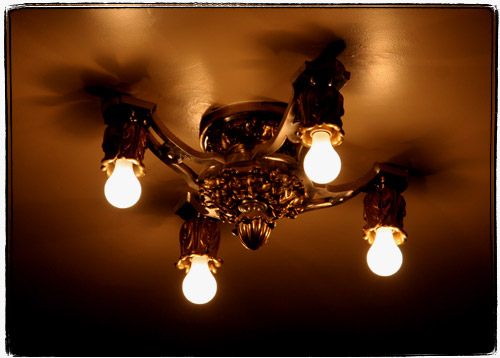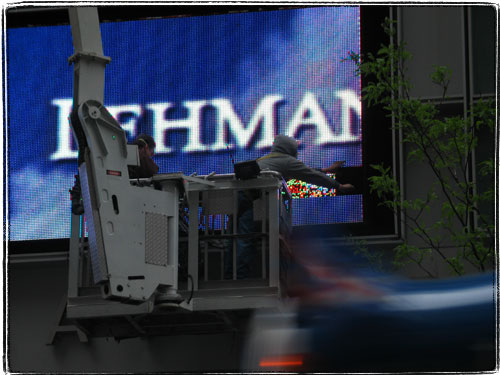Today, walking around Grand Central I was reminded once again that the late Victorians had a different attitude towards light bulbs than we do today. To them an exposed light bulb looked stylish and modern, to us it’s a symbol of decrepitude and poorness. We hide light bulbs behind shades and diffusers. The Victorians liked to show them off. Here is a fine example – an expensive-looking gilded chandelier in Grand Central topped off with exposed light bulbs. You can also see examples of these in IRT subway stations.

Victorian kitchens often had the simplest of light fixtures – a light bulb on a pretty woven cord, like this one sold by Rejuvenation Hardware. The also sell an amazingly cool looking replica Edison light bulb to go with it. My own kitchen is Art Deco-styled, but I was very tempted to get one of these.
Victorians also had a different attitude towards kitchens, and I absolutely agree with them. Every time that I hear on “This Old House” how kitchen is the most important room, kitchen is the center of the house, how the owners plan to entertain in the kitchen – I shudder. How can a nation so overweight make an altar out of the room where it is destroying itself? I am an overweight glutton myself (especially when depressed), but I certainly would not want to build my house around a kitchen. The Victorians had the right notion – a kitchen is a utility room. Like the laundry. Or the butler’s room. Or the carriage house.
Also, while we are on the subject of unusual light bulb – there’s a company that sells odor removing light bulbs. They claim that the Titanium Dioxide coating illuminated by fluorescent light is somehow breaking down odors. I hear that it works, so I ordered a couple for the room where the catbox is located. I’ll let you know how it’ll work.
